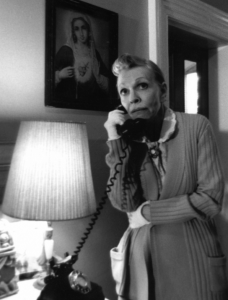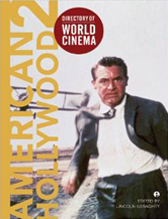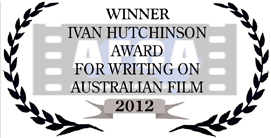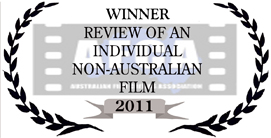
FEATURE: The Short End of the Flick
News headlines around the globe question, “Does being short hold you back?” (BBC News), “Is being short a disability” (USA Today), and “Being short isn’t a disease – why cure it?” (MUHC Ensemble). For those afflicted with a diminutive status the world must often seem like a cruel and unforgiving place. But ask anyone in-the-know about the film industry in Australia at present and they’ll probably tell you that when it comes to length, sometime shortness has its advantages.
Over the past few years, Australia has witnessed an explosion of short film festivals on a grand scale. Proliferating beyond the boundaries of the arts community, the short film industry has become immersed within government and corporate fields as diverse as education, sport and recreation, health, and the environment. So great the expansion that it now seems for every event, opening, seasonal change, geographical location, social demographic, sub-cultural movement and political voice, there’s probably a short film festival close by.
 There are short film festivals promoting social awareness (Lifelens, Scinema, Wild Spaces, Mountain, Penrith Valley, Reel Rural, Eco, The Other, Heart of Gold), queer and alternative festivals (Mardi Gras, MUFF, SUFF, Queer), festivals for dance and music (Hip Hop, Dance4, ReelDance), for the young (Little Big Shots, Reelife, Short Sharp, Blue Dandenongs, RemoteFest) and old (Young At Heart). There are short film festivals that limit production time (15/15, Shoot Out 24 Hour, Kino Kabaret), focus on a specific genre (Eyescream, Over The Fence, Fake, Japanime), or style (Black Nights, Australian Effects). And these are but the tip of the short film industry iceberg. Nearly all of the major international film festivals within Australian now incorporate screenings and competitions for short films. From Fitzroy to Mandurah, from Newcastle to Toowoomba, and from Darwin to Bondi Beach, the short film festival is quickly becoming a recognisable part of our cultural landscape.
There are short film festivals promoting social awareness (Lifelens, Scinema, Wild Spaces, Mountain, Penrith Valley, Reel Rural, Eco, The Other, Heart of Gold), queer and alternative festivals (Mardi Gras, MUFF, SUFF, Queer), festivals for dance and music (Hip Hop, Dance4, ReelDance), for the young (Little Big Shots, Reelife, Short Sharp, Blue Dandenongs, RemoteFest) and old (Young At Heart). There are short film festivals that limit production time (15/15, Shoot Out 24 Hour, Kino Kabaret), focus on a specific genre (Eyescream, Over The Fence, Fake, Japanime), or style (Black Nights, Australian Effects). And these are but the tip of the short film industry iceberg. Nearly all of the major international film festivals within Australian now incorporate screenings and competitions for short films. From Fitzroy to Mandurah, from Newcastle to Toowoomba, and from Darwin to Bondi Beach, the short film festival is quickly becoming a recognisable part of our cultural landscape.
So, what has prompted this current trend? Why has filmmaking suddenly expanded beyond the studio of the professional, or the den of the part-time enthusiast wielding an old Super-8mm camera? Technological developments in respect of digital camcorders and media editing software are no doubt partly responsible for the increase in would-be-filmmakers. For those of the digital generation, filmmaking has never been more affordable, accessible and user friendly.
There is however, another possible symptom driving the re-popularisation of short filmmaking. While championing the potential for an expansion of Australian cinema, the growth of the short film industry also indicates certain shortcomings with the direction of the feature film industry. Director Rohan Spong, whose award winning short-feature When Darkness Falls made the rounds of the festival circuit last year, points to the limited scope and opportunities within feature films as one such reason.
“Less feature length work is getting funded by bodies such as the AFC, and making shorts helps to raise a filmmaker’s profile as well as solidify [their] skill base. I think a lot of ‘next gen’ filmmakers are a little bit frustrated by the same style of work being green-lighted – the ubiquitous tale of the little Aussie battler”.
The present myopia of the feature film industry is just one of a number of cultural factors that have contributed to the rebirth of the Australian short film. Another reason I would suggest is the colonisation of ‘American’ narratives over our big screens, and the continual growth of reality-TV styled shows on our small screens. The result is an ever-narrowing field of ‘home-grown’ representations. Silenced within the mainstream media, short film festivals provide an outlet for the greater diversity of creative voices within our community.
However, not all the side effects of this expansion have been positive. Martin Gibbs, co-founder and at one time festival co-ordinator for Upstart Films suggests the boom in short films festivals has actually created problems for the industry’s smaller players.
“There is so much competition brought on by the success of Tropfest and the St. Kilda Film festival…the market is way too flooded now and it’s hard to be different from the next festival”.
As corporate backed festivals like Tropfest and Flickerfest have capitalised on the popularity of short films over the past decade, they have attracted an increasingly ‘professional’ entrant base. This has meant that while these festivals initially catered primarily to emerging and amateur talent, nowadays those same filmmakers are forced to compete with big budgets and high-profile names for screen space. More often than not, it’s the lesser known, financially less well-off filmmaker whose work ends up on the industry’s fringe festivals in order to find an audience.
 If at one point the short film industry provided a career springboard into the feature industry, such ‘transitions’ nowadays seem particularly rare. Thankfully for some, the Internet (through websites such as YouTube) has enabled opportunities for short filmmakers marginalised by the growth of the ‘big’ festivals. Though this too is not without its shortcomings. A brief trawl of your average short film website tends to uncover a greater proportion of cinematic ‘junk’ than screen ‘gems’.
If at one point the short film industry provided a career springboard into the feature industry, such ‘transitions’ nowadays seem particularly rare. Thankfully for some, the Internet (through websites such as YouTube) has enabled opportunities for short filmmakers marginalised by the growth of the ‘big’ festivals. Though this too is not without its shortcomings. A brief trawl of your average short film website tends to uncover a greater proportion of cinematic ‘junk’ than screen ‘gems’.
Perhaps the only thing that hasn’t changed all that much amidst the growth of the industry is what makes a good short film. For both Spong and Gibbs, ‘characterisation’ remains the key to success. As Spong elaborates,
“By the nature of the film’s length, character has to be developed in seconds rather than minutes. Shorts are also a great medium for experimenting, and I think you have to credit short filmmakers who utilise unusual angles, unorthodox soundtracks, or experimental effects to explore their ideas…all things that might grate on the viewer at 90 minutes, but wouldn’t at 10”.
Spong is right to hope that filmmakers will continue pushing the boundaries of the medium. And who knows, if the short film festival industry in Australia continues to expand at its current rate, the meek might just inherit the Earth.





RSS feed for comments on this post. TrackBack URI